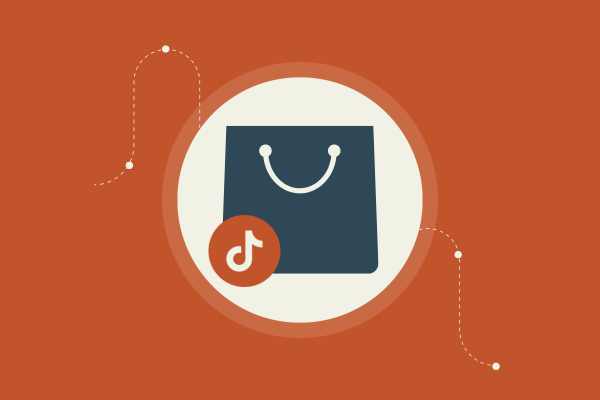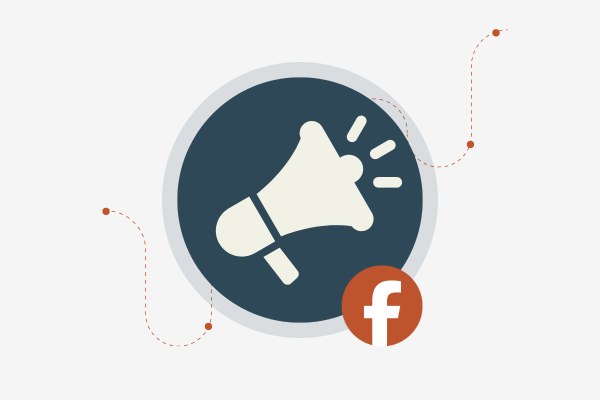Why eCommerce Entrepreneurs Should Care About Break-Even Analysis
E-commerce is fast-paced and exciting, but it can also be risky. You need to know where your money is going. Break-even analysis helps you figure out exactly when your business covers its costs and starts making profit. This is vital if you want to avoid nasty surprises.
Why should you care? Well, understanding your break-even point helps you plan better and set clear goals. It allows you to make smart choices about pricing, marketing, and managing expenses. Knowing your numbers means you stay in control, even when things get wild.
Nobody likes unexpected costs cutting into their profits. With a break-even analysis, you can manage expenses, keep margins healthy, and even improve customer service. So if you’re not doing it already, it’s time to start. Your bottom line will thank you.
Key Takeaways
Break-even analysis reveals when you start making profit
Helps in planning, goal-setting, and controlling costs
Key tool for financial stability and business growth
Understanding Break-Even Analysis
Break-even analysis tells you where you can stop worrying about covering costs and start making profit. It’s crucial for managing expenses and setting the right prices for your products. Let's dive into the key elements you should know.
What Is Break-Even Analysis?
Break-even analysis helps you pinpoint when you're not losing money but not raking it in yet either. It’s like finding that sweet spot. This analysis reveals when total revenues match total costs. At the break-even point, all expenses are covered, and every sale beyond this is profit.
Why is this important? Knowing your break-even point can guide decisions on pricing, budgeting, and understanding your financial health. It’s especially vital in e-commerce, where competition is fierce, and margins can be razor-thin.
Key Components: Fixed and Variable Costs
Fixed Costs are your constant companions. These are expenses that don’t change regardless of how much you sell. Think rent, salaries, and insurance. They’re the bills that keep coming no matter what.
Variable Costs, on the other hand, change with your sales volume. These include materials, shipping, and packaging costs. The more you sell, the higher these costs go.
To successfully conduct a break-even analysis, distinguishing these two types is crucial. Only by knowing how fixed and variable costs work together can you figure out the magic number of units you need to sell to start profiting.
How to Calculate the Break-Even Point
The break-even point is calculated using a simple formula. It’s like a magic spell for e-commerce success:
Break-even point (units) = Fixed Costs / (Price per Unit - Variable Cost per Unit)
So, if your fixed costs are $1,000, the selling price per unit is $100, and the variable cost per unit is $50, your break-even point would be:
1,000 / (100 - 50) = 20 units
Sell 20 units, and you’ve covered all costs. Anything beyond that? Pure profit. Use this formula to optimize pricing strategies and ensure you’re setting yourself up for success.
Why Break-Even Analysis Matters in E-Commerce
Understanding break-even analysis is like having a roadmap for your e-commerce journey. It tells you when you're on track to make money and points out potential pitfalls. Let's dig into why this is crucial for anyone running an online store.
Profitability and Cash Flow
Break-even analysis is your best friend when it comes to understanding profitability and cash flow. By figuring out your break-even point, you'll know exactly when your business starts earning instead of just breaking even. Forget surprises; this tool helps you budget better by projecting profits and expenses.
Cash flow benefits, too. When you know your numbers, you can forecast what's coming in and what's going out. No more guessing games. You're in the driver’s seat, controlling the ebb and flow of your money, making sure your e-commerce business isn't just floating but sailing smoothly.
Shipping Costs and Sales Volume
For online stores, shipping costs can eat into your margins if you're not careful. When you use break-even analysis, you get a clearer picture of how shipping impacts your sales volume. Every item sold has a shipping cost attached to it, right? This tool helps you see how volume affects those costs and your bottom line.
Pricing Strategy and Contribution Margin
Getting your pricing strategy right can make or break your business. Break-even analysis gives you critical insights into your contribution margin, which is the portion of sales revenue that helps cover fixed costs and eventually becomes profit.
Here's how it works. Analyze your costs and see how much each product contributes. When you know this, you can set prices that maximize profits without scaring off customers. Strike the right balance and your contribution margin becomes a powerhouse, driving your e-commerce business forward. Find that sweet spot, and you’re golden.
Applying Break-Even Analysis
Break-even analysis isn't just a number-crunching exercise; it's a powerful tool. Use it to set clear revenue goals, make sharp business calls, and price your products just right. Here’s how to apply it effectively.
Setting Revenue Targets
Want to know how much you need to sell to cover your costs? That's where break-even analysis shines. By figuring out your fixed and variable costs, you can pinpoint the exact number of sales needed. This helps you set realistic revenue goals.
Staring at huge numbers can be daunting. Instead, break your targets down by product or sales events. This can make big goals feel more manageable. People often feel less pressure and more motivation this way. It’s like tackling daily workouts instead of a full marathon at once.
Making Informed Business Decisions
You can't make strong business decisions without solid data. Break-even analysis provides that data, cutting through the noise. By knowing exactly when your business starts making a profit, you get clearer insights for planning your next moves.
In fast-changing markets, this knowledge is your superpower. You'll know when to ramp up marketing, launch sales events, or cut unnecessary costs. And this isn't just guesswork. It's all about making decisions backed by numbers. With the right data, every step you take is calculated, not casual.
Product Pricing and Quality
Pricing can make or break your business. With break-even analysis, you get a clear view of how pricing affects your profitability. You need to know your costs well so you can set a price that covers them and still leaves a margin for profit.
But it’s not just about covering costs. Quality matters too. Customers feel more satisfied when they see quality that matches the price. So, consider what quality means in your niche, and adjust your pricing to reflect that balance. It's all about delivering value—for both you and your customers.
Managing Costs for Better Profit Margins
Understanding how to manage costs is key for entrepreneurs who want to boost their profit margins. By focusing on reducing variable costs, increasing the contribution margin ratio, and maintaining a strong margin of safety, you set yourself up for financial success.
Reducing Variable Costs
Variable costs can eat away at your profits. These are costs that change with sales volume, like shipping fees, raw materials, or packaging. To manage these, look for cheaper suppliers or negotiate better rates. Bulk purchasing can also help reduce these costs.
You might also consider automating some processes. It cuts down on labor costs and improves efficiency. Every dollar saved here means more profit for your business. Keep an eye on your costs and adjust as needed. Remember, every small reduction counts.
Maximizing Contribution Margin Ratio
The contribution margin ratio reveals how much money is left after covering variable costs. This is crucial for your bottom line. To maximize it, focus on increasing your product price or reducing variable costs.
Evaluate your pricing strategy. See if you can charge more without losing customers. Or find cheaper ways to produce your products. Better quality at a lower cost increases profits and keeps customers happy. Increasing this ratio gives you more flexibility and funds for reinvestment.
Maintaining a Healthy Margin of Safety
A healthy margin of safety is like having a cushion. It's the buffer between your sales and break-even point. This helps you understand how much sales can drop before you start losing money.
To maintain it, keep fixed costs low and variable costs manageable. Doing a break-even analysis regularly helps you track this. You’ll know when to cut expenses or increase sales efforts. It keeps your business safe when things aren’t going as planned. Stay on top of this, and you'll have peace of mind knowing you’ve got a financial cushion.
Break-Even Analysis for Strategic Planning
Break-even analysis is not just about figuring out when you won’t be in the red anymore. It's critical for aligning your business plan, ensuring accurate financial projections, and building trust with investors.
Aligning with Your Business Plan
You gotta start here. Your break-even analysis connects directly to your business plan. By determining the point where total revenues equal total costs, you can make informed decisions about pricing and cost control.
These decisions are crucial for small businesses and e-commerce entrepreneurs. When you align break-even figures with your business plan, you highlight whether your expected sales price per unit can sustain your business goals. Planning becomes less about shooting in the dark and more about hitting targets.
Having a clear strategy also shows that you know your market and you've thought things through. With each adjustment in your business plan, revisit your break-even analysis to ensure you’re on track.
Financial Projections and Business Loans
Lenders love numbers. A thorough break-even analysis gives you those numbers. It’s a key piece of financial analysis that lenders look at when you're applying for a business loan.
They want to see when you expect to break even because it tells them how risky you are. Showing when you plan to cover your costs reassures lenders about your ability to pay back the loan.
A strong analysis can even help negotiate better loan terms. Accurate financial projections built from your break-even point are a lot more convincing than just throwing numbers around. This type of planning shows you mean business.
Communicating with Investors
Investors? They want to see a clear picture. Your ability to communicate your break-even analysis effectively can be the difference between getting funding or not.
Investors like knowing you’ve done your homework. Demonstrating that you understand at what point your venture will start to profit is critical. It provides insight into whether they should bet on you.
What’s more, being able to share these break-even forecasts conveys confidence and expertise. Investors can visualize the potential return on their investment in your e-commerce business. It’s about painting a picture where they see gains, not just dreams.
Leveraging Break-Even Analysis for Customer Service
To up your eCommerce game, break-even analysis isn't just about profits. It's a tool for enhancing your customer service and staying nimble in a changing market. Understanding fixed and variable costs can directly impact how you engage and satisfy your customers.
Enhancing Customer Satisfaction
Customer service is about keeping folks happy and loyal. Break-even analysis helps you pinpoint where expenses are going, so you can spend wisely. Know what's worth investing in.
Maybe you find that shipping is your biggest cost. If you cut it by finding more cost-effective shipping options, you can offer free shipping. Customers love a bargain, and free shipping is a great hook.
Look at the data. If your break-even point is too high because of customer returns, dig into why. Improve product descriptions or enhance customer service to lower dissatisfaction.
By finding these golden nuggets with break-even analysis, you can direct resources to where they'll make the most impact on customer satisfaction.
Responding to Market Changes
Markets change faster than your morning coffee cools. To stay ahead, keep an eye on your break-even point. If it shifts, something's up.
A new competitor might be lowering prices, signaling it's time to adjust yours. If break-even analysis shows a dip in sales due to market trends, dive deep into those trends.
Anticipate customer needs. If the data suggests a new product line will break even sooner, you might consider expanding. Stay flexible and let numbers guide your decisions.
Being proactive means you can respond to customer demands before they even make them. That's smart business. Use break-even analysis to predict these shifts and act fast, without risking your bottom line.
Conclusion
Why should you care about break-even analysis? It’s your secret weapon.
Understanding break-even points helps you make smarter financial decisions. It shows when your sales dollars finally cover costs.
Think about it. Knowing this gives you a clear view of your business’s financial health.
You need to know how many units to sell to not lose money. It's not just about covering costs—it's about planning growth.
It's simple math. Take your fixed costs and lump them together. These are things like rent and salaries. Then, figure out your variable costs per product. That's stuff like materials or shipping.
Now, with this data, you can map out how many units you need to sell to break even.
That magic number tells you so much! It’s like setting your GPS in business.
So, run this analysis regularly. Stay on top of your costs and adjust pricing strategies to keep your business healthy.
Mastering break-even analysis puts you in control and keeps surprises at bay.







